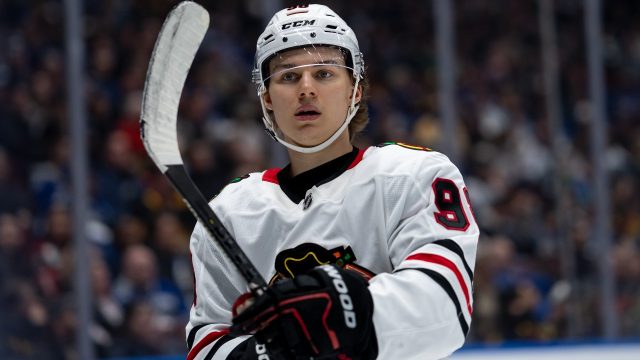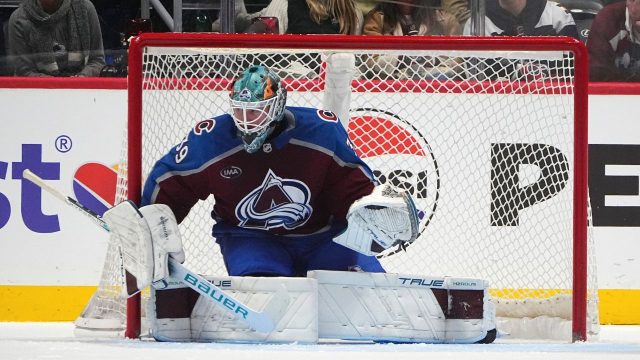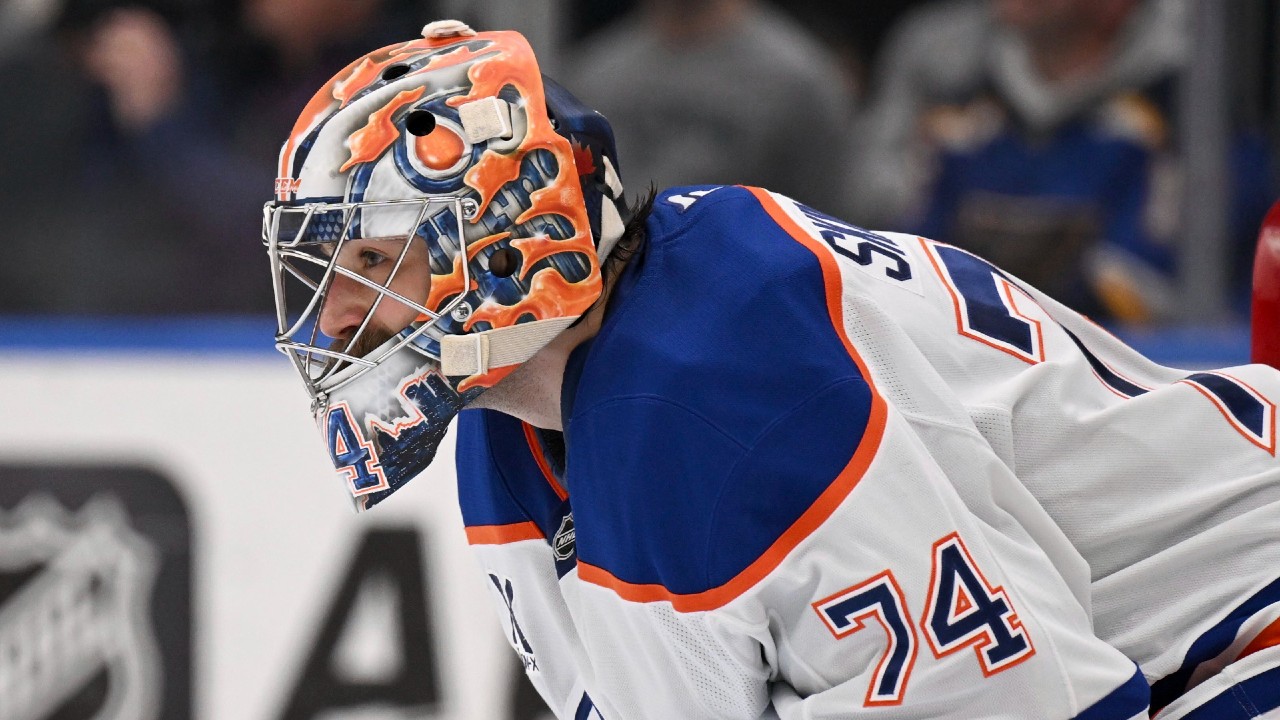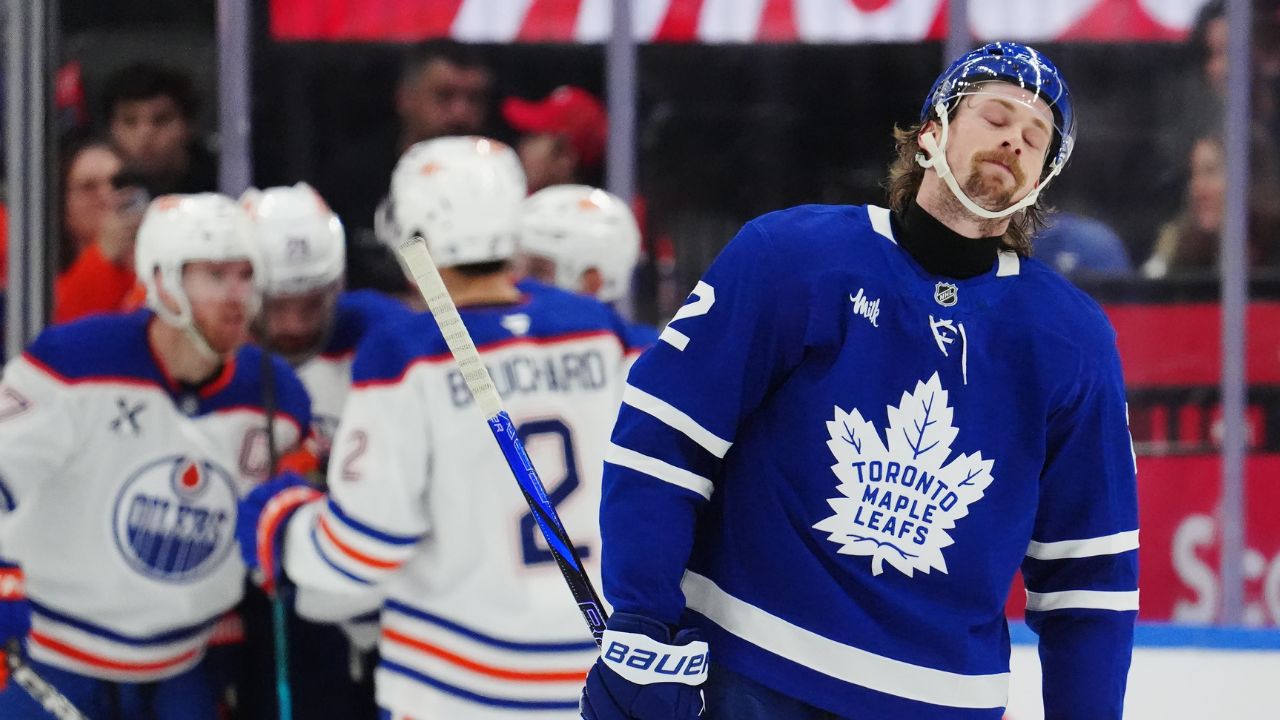
At this stage of the season the NHL standings seem more like morning rush hour, with bumper-to-bumper traffic where no one is getting anywhere fast. I can’t ever recall seeing 31 of the 32 teams so clumped together at this time in November. American Thanksgiving has always been the best time to measure not only where a team stands in the rankings, but more importantly, what their strengths and weaknesses are.
Sure, Colorado is standing alone with one regulation loss in 22 games. The ever-dependable Nathan MacKinnon leads the league in points and Cale Makar leads all defencemen in scoring.
But as far as the rest of the league is concerned, there is a cluster like we don’t usually see.
With the majority of the league still neck-and-neck fighting for playoff contention at the quarter mark, let’s temper expectations for my first trade board of the season.
We’ll start at rock bottom, with Calgary and Nashville.
Despite the Flames sitting 31st in points and points percentage, they are reluctant to hang up the ‘For Sale’ sign and look to trade Nazem Kadri. It leaked that owner Murray Edwards had no interest in moving the centre, and Flames president of hockey operations Don Maloney told Sportsnet’s Eric Francis “I think we need more Kadris, not less.”
Nashville, 32nd overall, is going to try and shed some money. Today the Predators are 6-12-4 with a league-worst .364 points percentage. On Nov. 25 last year they were 7-11-3 with a .405 points percentage, 29th in the league. At this rate, Nashville is on track to finish with even fewer than the 68 points they had in 2024-25 and they won’t let another disappointing season go past without change. Unless they start scoring more goals and winning more games, they will begin to move out contracts.
The Blues seem to be the most active and frustrated team out of the gate and have trade potential. With the exception of Robert Thomas and a few 25-and-under talents such as Jimmy Snuggerud, GM Doug Armstrong isn’t afraid to tell teams he’s open for business.
-
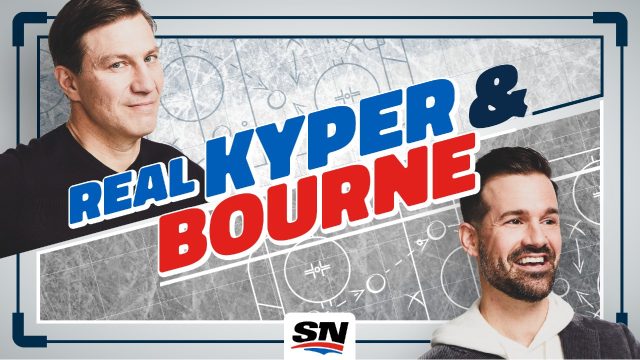
-
Real Kyper and Bourne
Nick Kypreos and Justin Bourne talk all things hockey with some of the biggest names in the game. Watch live every weekday on Sportsnet and Sportsnet+ — or listen live on Sportsnet 590 The FAN — from 4 p.m. to 6 p.m. ET.
In addition, there are a few teams I’m keeping an eye on in the next few weeks to see how their trade potential develops: Pittsburgh, New York Islanders, New York Rangers, Minnesota, Edmonton, Vancouver and San Jose.
Toronto and Edmonton are two underachieving teams that are still expected to compete, so their rabid fan bases won’t accept anything less than playoff contention. It’s clear that if either has to endure another three-to-five-game losing streak, it would put massive amounts of pressure on them to quickly find a deal (anything) that could resuscitate a lost season. That could mean major, or minor, moves.
Rumours have started to kick up in Vancouver again, but they aren’t ready to give up on the season yet either. But the more it slips away, the greater the potential they could induce some major change.
Whatever shakes out, the trade market is beginning to take shape. There are several pending UFAs who could be available and would have substantial impacts, as well as a number of highly serviceable veteran players.
Here’s a look at my first trade board of the season…
Jordan Binnington, G, St. Louis Blues: 5-5-4 | 3.13 GAA | .880 SV%
We’ve been here before with Binnington and the Blues. In February of last year we had five members of this team appear on the trade board (including the goalie) when they were 27-26-6, sixth in the Central and five points out of a playoff spot. That was about 10 days before the trade deadline. But Armstrong said his players would determine how he approached trading, and the team went 5-1-1 from the end of the 4 Nations tournament to the deadline, so he stood pat. In fact, St. Louis was the NHL’s best team from late February until the end of the regular season with a .788 points percentage, a very similar regular season turnaround to the one they had in 2018-19 when Armstrong also came close to shaking up the roster.
This season has been rough for St. Louis again, so the same speculation is kicking up. Statistically, Binnington has been one of the worst goalies in the league so far, with an .880 save percentage and 3.13 GAA, and though 25-year-old Joel Hofer hasn’t been better, he is seen as a ready replacement. Binnington’s 30-save, 2-1 win over the Islanders on Saturday was a reminder of how he can still get the job done, and teams looking at him will take notice of that.
Binnington has one more season on his contract and the sense is he won’t be part of any re-tool the Blues might undergo. The strongest speculation ties Binnington to Edmonton, and that the Oilers are also seeing if they can get a defenceman out of St. Louis at the same time. That potential deal would most likely be built around Stuart Skinner going back to St. Louis to team up with Hofer.
Elias Pettersson, C, Vancouver Canucks: 7 G | 13 A | 20 PTS | 23 GP
The Canucks are going to be a hotbed of rumours through this season and with colleague Elliotte Friedman reporting on Monday night that Vancouver is listening to offers on its veteran players everyone is today trying to decipher what that could mean. It’s hard not to think of Pettersson in light of this development. Despite now having a full no-movement clause, it has been thought that if things went sour again this season for the Canucks that both the team and player would be open to a change.
This wouldn’t be an imminent move, as the Canucks still need to be convinced that this season has truly been lost. It’s believed the Hurricanes and Canucks have had discussions about Pettersson in the past and there’s no reason to believe there isn’t an ongoing dialogue. Vancouver would have interest in Andrei Svechnikov, but that won’t solve their issues down the middle.
While a Pettersson trade might be slower to develop this season, he’ll remain on this list until the Canucks can prove they’ll contend for a playoff spot.
Kiefer Sherwood, RW, Vancouver Canucks: 12 G | 4 A | 16 PTS | 23 GP
When we hear that “veteran players” are available out of Vancouver, Sherwood is another name that immediately comes to mind for several reasons. First, he is in the final year of his contract and could become a UFA next July. He’s looking for at least $30 million over six years ($5 million AAV) out of Vancouver, which might be too rich for them. That is a sharp hike from his current rate and would take him through his age-36 season. That’s a lot to ask for a player at his age.
Sherwood played his first full NHL season two years ago, scored a career-high 19 goals last season and blew past the league record for hits. Today, Sherwood is second in the league in hits and has already scored 12 goals. The appeal for a playoff team is obvious.
This is a tough position for Vancouver to be in. They can’t take a chance to give that sort of a contract to Sherwood and have him fall off or disappear shortly after. He’s also capped as a third-line player here. In all probability, this will eventually lead to a trade.
Nazem Kadri, C, Calgary Flames: 4 G | 14 A | 18 PTS | 24 GP
No matter what we hear about Calgary being unwilling to move Kadri, the fact is the player might end up wanting out. Kadri loves Calgary, but he loves winning more and wants to chase another Stanley Cup before he retires. It would be hard for the team to still try and hang on to him if he starts having an eye on going elsewhere. Besides, of all the players the Flames could move this season, the 35-year-old centre might bring them back the greatest return.
Kadri is once again the Flames’ points leader after he scored 35 goals in 2024-25. There’s a lot left in him and last time he participated in the playoffs, he was Colorado’s second line centre, with 15 points in 16 games on the way to winning the Stanley Cup. Kadri has a 13-team no-trade clause and another three years left on his contract at a $7 million cap hit.
Blake Coleman, LW, Calgary Flames: 8 G | 2 A | 10 PTS | 24 GP
If sandpaper and scoring upside is desired as teams try to emulate Florida’s post-season success from the past two years, Coleman could stir up an interesting market. Third among all Flames forwards in hits, the 33-year-old also has eight goals this season and is just two years removed from a 30-goal campaign. He has two years left on his contract with a $4.9 million cap hit and a 10-team approved trade list.
Teams would prefer to bring down that AAV, but it’s hard to trade for a bonafide playoff-type player. There is a ton of value in Coleman because he’s a proven winner. He’s won two Stanley Cups (with Tampa Bay) and has played great in the post-season before.
Rasmus Andersson, D, Calgary Flames: 5 G | 11 A | 16 PTS | 24 GP
The most anticipated trade candidate out of Calgary, Andersson is in the final year of his contract and on track to become a free agent next summer. The 29-year-old has a six-team no-trade list and is one of those high-value right-shot defencemen every team needs.
Justin Faulk, D, St. Louis Blues: 6 G | 7 A | 13 PTS | 23 GP
There are a few possible trade candidates on St. Louis’ blue line, but because Faulk has less term (signed through next season at $6.5 million) and trade protection (a 15-team no-trade list) than Colton Parayko, he is the one in focus on my trade board.
Faulk, 33, is very attractive on the trade market. He is kind of seen as an option for teams to look at if they lose out on acquiring Andersson.
Steven Stamkos, LW, Nashville Predators: 4 G | 1 A | 5 PTS | 22 GP
Another disaster of a season in Nashville is going to bring change, it’s just a matter of who gets caught up in it, and when. Stamkos is one of the more likely players to end up in a trade here, but the Predators will have to work with a suitor on retaining money, as the 35-year-old winger has another two years and an $8 million cap hit on his contract. After scoring just 27 goals last season, Stamkos has four in 22 games this season — just a 16-goal pace. An acquiring team needs to make sure it has a facilitator who can feed Stamkos’ still-lethal shot. Stamkos also has to buy in, since he has a full no-movement clause, but that’s not likely to be an issue since he’ll want to take another crack at resurrecting his career elsewhere.
I don’t think this is going to be an urgent trade, at least not until he improves a bit and shows teams he’s worth trading for. His $8 million AAV is an issue because even if someone takes on 50 per cent of that (and pays up in trade for Nashville, or some other team, to retain money), they’ll want to see something from him that shows he’s even worth a $4 million roster spot. This is a tricky one but, unless he’s moved earlier, Stamkos will be someone who stays on this trade board until the March deadline.
Ryan O’Reilly, C, Nashville Predators: 6 G | 7 A | 13 PTS | 22 GP
Of all Nashville’s most notable trade possibilities, O’Reilly is the only one who doesn’t have any trade protection, so the Predators are free to move him anywhere. However, last season GM Barry Trotz said he would treat O’Reilly as if he did have some say in whether or not he’d move. Frustration is building and, at 34 years old with another year left on his contract ($4.5 million cap hit), might O’Reilly be more open to change and another Cup chase now? He plays a premium position at centre and has appealing post-season experience and success.
Brayden Schenn, C, St. Louis Blues: 4 G | 4 A | 8 PTS | 23 GP
While Jordan Kyrou and Pavel Buchnevich were both on our trade board last season, they have full no-trade clauses so any possible move has extra hurdles. Schenn, on the other hand, has a 15-team no-trade list, so the Blues have more flexibility with him. It’s been quite a struggle for Schenn so far, with just eight points and a team-worst minus-14, but his flexibility to play centre or wing will be attractive as will his style of play. Schenn is third on the Blues in hits.
Alex Tuch, RW, Buffalo Sabres: 8 G | 13 A | 21 PTS | 22 GP
When it comes to Tuch as a trade candidate, it’s just a matter of where Buffalo thinks it is in the development of its program. A pending UFA, Tuch might be looking at making $10 million per season on his next contract and will be 30 years old when that kicks in. Does that align with Buffalo’s core of 23-to 25-year-olds they have? Also, with so many of next summer’s UFAs off the board, Tuch may be waiting and in position to become a premier UFA in July. Right now, the two sides are far apart in cash. Do the Sabres see Tuch, currently tied for the team scoring lead, as a $10 million player?
Brandon Carlo, D, Toronto Maple Leafs: 0 G | 2 A | 2 PTS | 18 GP
The Leafs did explore trading Carlo last off-season, but couldn’t get to the right deal. There’s a strong suggestion Toronto and Buffalo were in talks over having Carlo involved in a JJ Peterka trade and then moving towards a Carlo-for-Bowen Byram type of trade over the summer.
Now Carlo is hurt, which will slow down any talks, and he hasn’t had a great year on the ice either. In fact, none of the Leafs have. However, Carlo still has some attraction to other teams. He can log big minutes, is a right shot, still relatively young at 28 years old, and Boston is eating $615,000 of his salary, so he’ll count for just $3.485 million — and possibly less if the Leafs retain some of that. Carlo has another season left on his contract, so an acquiring team would get him for two playoff drives. He’ll get a lot of respect in the trade market.
Radko Gudas, D, Anaheim Ducks: 1 G | 2 A | 3 PTS | 11 GP
As Anaheim seems like it might be turning the corner into a playoff team, the timing of Gudas on a trade board may seem surprising. And don’t get me wrong, the Ducks do like Gudas and what he brings on the ice, but there is concern about his age, an expiring contract, and an overall lack of speed on the right side of Anaheim’s blue line between Jacob Trouba and Gudas.
There will always be value in right-handed, shutdown defencemen and Gudas brings the ‘snarl’ teams will want in the post-season. Ducks GM Pat Verbeek can be a hard bargainer and if he doesn’t get what he needs in this trade, Gudas could stick around for the end of his contract, which expires in July. Anaheim has come a long way, but aren’t “there” yet to contend for a Stanley Cup. This may be a play for Verbeek to continue building up assets.
Pavel Mintyukov, D, Anaheim Ducks: 0 G | 3 A | 3 PTS | 19 GP
How often does a 10th overall draft pick become available in trade just three years after he was selected? That’s where we may be at with Mintyukov, a left-shot defenceman who has found his way to a few healthy scratches and being challenged for a full-time spot in the starting lineup.
Brad Lambert, C, Winnipeg Jets: 1 G | 0 A | 1 PTS | 4 GP
Last week it came out that Lambert’s representation had been given permission by the Jets to try and find a trade partner for the 21-year-old, who had limited minutes with Winnipeg this season and has played just eight total games between the NHL and AHL in 2025-26. The 30th overall pick from 2022, Lambert hasn’t been able to crack the NHL lineup full-time yet, but has the potential to do so. Two years ago he showed promise when he led the AHL team in scoring at 19 years of age, but that production took a 14-goal and 20-point dip in 2024-25.
There is value in this player, but Winnipeg is reluctant to move him. While the Jets are looking into possibly trading the player, deep down they aren’t too happy about this development. It’s hard enough to attract players to Winnipeg so they don’t want to give the impression that young players under team control can force their way out and will be accommodated by the team.


